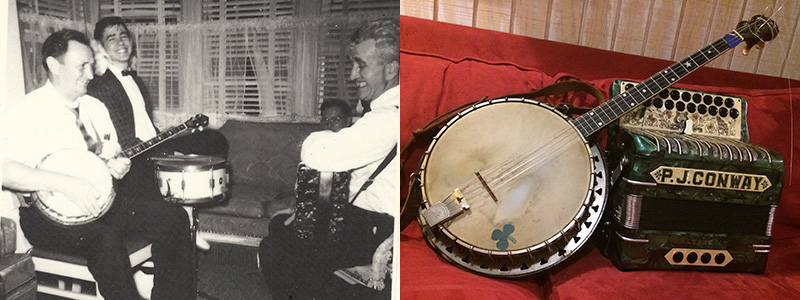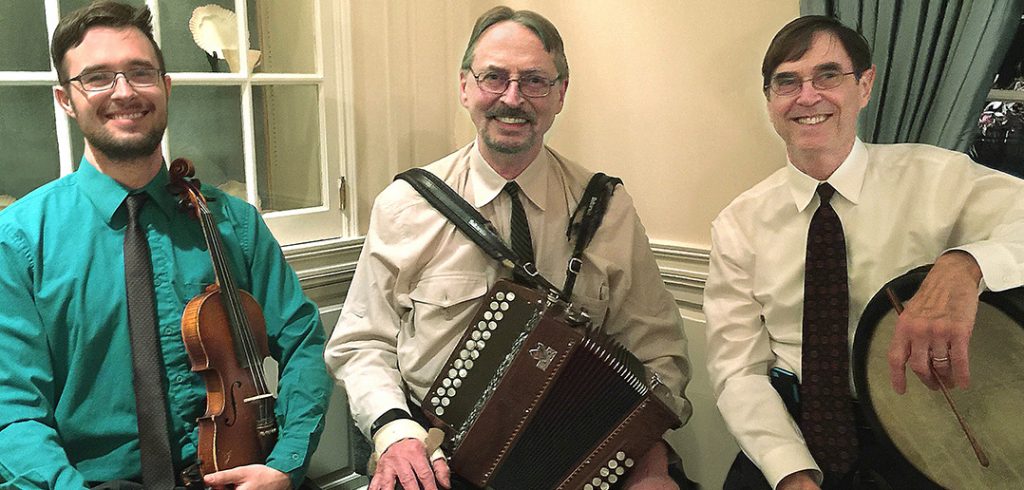Since the 1970s, Winch has made his home in the Washington, D.C., area, though much of his work remains rooted in Irish-American New York. “Childhood Ground,” a track on the new album, recalls his boyhood neighborhood, which was razed to make way for the Cross Bronx Expressway during the late 1950s.
Winch’s poetry has appeared in more than 40 anthologies, including five Best American Poetry collections. He earned a master’s degree in English at Fordham in 1969 and, as a doctoral fellow, was a chapter away from completing his dissertation when he moved to D.C. In 2014, his undergraduate alma mater, Iona College, awarded him an honorary degree. “I finally got my doctorate,” he said.
How did “When New York Was Irish” come about?
In the late 1980s I really pushed Celtic Thunder to get a new album’s worth of material together. I had the chorus in my head for years and had never shared it with anyone, and before rehearsal I sat down and quickly wrote another few verses. Everyone was totally knocked out and that was the first sign to me that the song would resonate with people. I have at least 25 different recorded versions of it.
What brought you back to the studio for This Day Too?
I really wanted to do a recording project with my son. Michael is a terrific fiddle player. Given this point in my own life—I’m 71 now, he’s 27—I thought we should do a record together. My brother Jesse volunteered to be co-producer, and that kind of made the three of us the nucleus of the project, but since we are so involved in the Irish-American community in this area we knew we would be calling on lots of other friends to play on it.

How did Celtic Thunder get started?
When I moved to Washington, D.C., in 1972, Jesse was already here, and right away I found myself playing in a ceili band with him. Then we started an old-time music string band that, because of me and Jesse, played a lot of Irish music as well. Occasionally we would get an Irish gig and for those gigs we called ourselves Celtic Thunder. Jesse and I met a fiddle player named Steve Hickman and his wife, Linda Hickman, a flute player, around 1976. We also connected with singer Nita Conley, and the five of us started getting together and playing traditional Irish music. We really clicked. We took the spare name from the string band, and Celtic Thunder became popular pretty quickly.
You’ve published seven books of poetry and two short story collections, one fiction and one nonfiction. How would you characterize your writing?
Some of my poetry is narrative. But a lot of what I do is influenced more by avant-garde impulses and surrealism. Writing, for me, on some level is play. It has to have that element to it. It has to be something that is pleasurable, that exercises your creativity in a way that provides you with a certain level of satisfaction, and for me that involves doing more than just one kind of writing.
Tell me about your years at the Smithsonian Institution.
When I first moved to D.C., I made my living for years as a musician and freelance writer. After I got married, I started thinking I needed something more predictable. That’s when I sought work at the Smithsonian. I spent six years at the Smithsonian’s National Museum of American Art—I was senior editor and acting head of publications there. In 1992 I moved to the National Museum of the American Indian and helped start a new publications department there. I was able to invent the whole operation and build it into what I think was a very successful enterprise. I produced somewhere in the neighborhood of 60 to 65 books as editor or project director. I had a great staff, and it was hard to leave, but I retired early. I recognized we don’t live forever and I wanted to spend as much time as I could with my own work.
I understand Boston College has acquired your literary and music archive.
I knew it would be a unique archive because it was split between music and writing. And I knew for anyone interested in Irish-American culture, it would be a good resource because I have been at the front lines of the Irish-American issue for 40 years or more. Fortunately, BC shared this view. One of my missions in life has been the promotion of Irish-American identity and the validity of Irish-American history and culture. Those ideas are more widely recognized and accepted today.
What’s next?
I have a book coming out in the fall from Hanging Loose Press—The Known Universe, a collection of poems written over the last few years. And I have a Young Adult novel, Seeing-Eye Boy, about a kid growing up in the Bronx in the 1950s, kind of modeled on me and a little bit on my son and father. It’s finished, but I don’t yet have a publisher for it. I’m still playing and still writing a lot. And I’m taking a course in the Irish language for the first time in my life, which I’ve always wanted to do.
Interview conducted, edited, and condensed by Carolyn Farrar, FCRH ’82.
Watch the video for “Childhood Ground”


